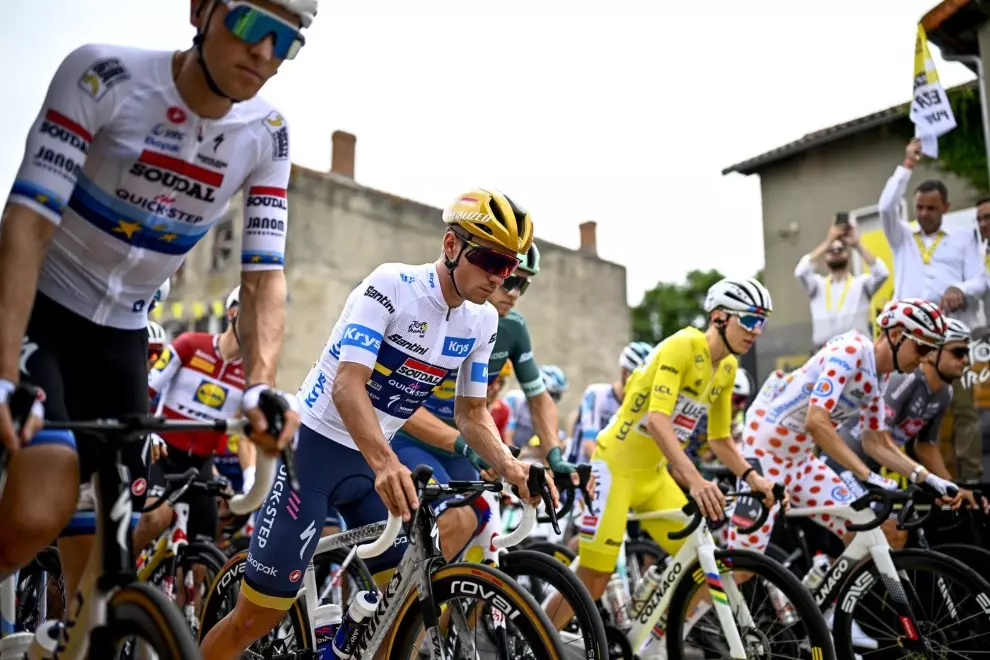Technique
Downhill is all about the technique. Once you gain it, you become a better rider. While the triathlon courses in the cities can be either hilly or flat, they’re always on narrow roads with a lot of corners covered by different surfaces, making the ability to handle your bike very important. This knowledge might boost your riding. Despite being underestimated, safe descending is one of the most important segments of road cycling – at least as long as you want to survive your day uninjured. And when you have your safety covered, you can enjoy the similar cooling breezy wind Valentino Rossi experiences on the Moto GP circuits.
The right position
There’s no one “right” position I could recommend for better descending. It depends on the length and steepness of the particular section. You also have to keep in mind the quality of the surface and how many corners are you about to approach. The wind and the presence of other riders might also play a significant role. My favourite position, though, is tucking on the top frame tube with my hands in the drops.

Look ahead
Looking down under the wheels is one of the greatest mistakes. While descending, the obstacles could appear faster than you’d expect so it’s highly important to read the road. Once you spot a hindrance like a pothole, prepare for a dodging manoeuvre. First of all, check if there’s no car coming from rear to avoid moving accidentally under its wheels.
Feet parallel
If you’re coasting, keep both feet parallel with the ground placing your weight equally on both pedals. Your heels should be slightly dropped. In this position, the braking will be more efficient. If you need to brake more, sit in more upright position creating drag that works as an air-brake.
Harder gears
If you want to go faster, use harder and harder gears. When you can no longer accelerate using pedalling, you can still add some speed by a more aerodynamic position. Bend your elbows and lower your chest towards the handlebars by raising your backside.
Hands-on drops
Your hands should dwell on drops with one or two fingers over the brake levers. Keeping hands on the drops would cause a remarkably stronger force on the levers than if you hold them on the hoods because you have a lower centre of gravity.
Use both brakes
Always use both brakes. The rear brake is better for maintaining your speed in corners while the front is much more efficient to stop you, however, it must be used smartly in order to avoid a risk of skidding. To make your braking more intense, move your backside behind the seat and push the front lever harder.
Cornering
Without a proper position, the ride might get dangerous as you could lose the appropriate traction on the road. Again, hold the bars in the drops to lower your centre of gravity and improve you aerodynamic. The moment you approach the corner, lean the bike using your body weight and straighten the outer leg while putting the pressure down on the outside pedal. At the same time, your inside hand should put the pressure on the bars producing a counter balance. The hardest part is the ability to estimate the proper speed. It’s always better slowing down in the beginning than approaching the corner with too much speed causing you to miss the perfect curve. Look ahead at the exit of the bend. Seems to be logical but it ain’t so easy. Remember, where you look is where you will go. The critical mistake is looking at a potentially dangerous object off the road. Once people fix their eyes on trees, poles or barriers, they’ll probably end up crashing there. Look ahead on the road, lean the bike, lose your braking grip to avoid skidding and believe you will make it through.
Wet surface
On wet road, all hazards are magnified because your wheels have less traction. You will need to control your speed more carefully. Potentially hazardous are painted lines, drain covers, speed bumps, and fallen leaves or gravel. Handling bike on a wet surface is mostly about experiences and tires. In the bends, it helps to move your centre of gravity more to the outside, pushing the inside knee to the road and leaning the bike under you exactly as the riders in MotoGP do. Without training, you can hardly master it, though. Should you crash on wet, however, it happens so quickly that there’s no time to get scared.







